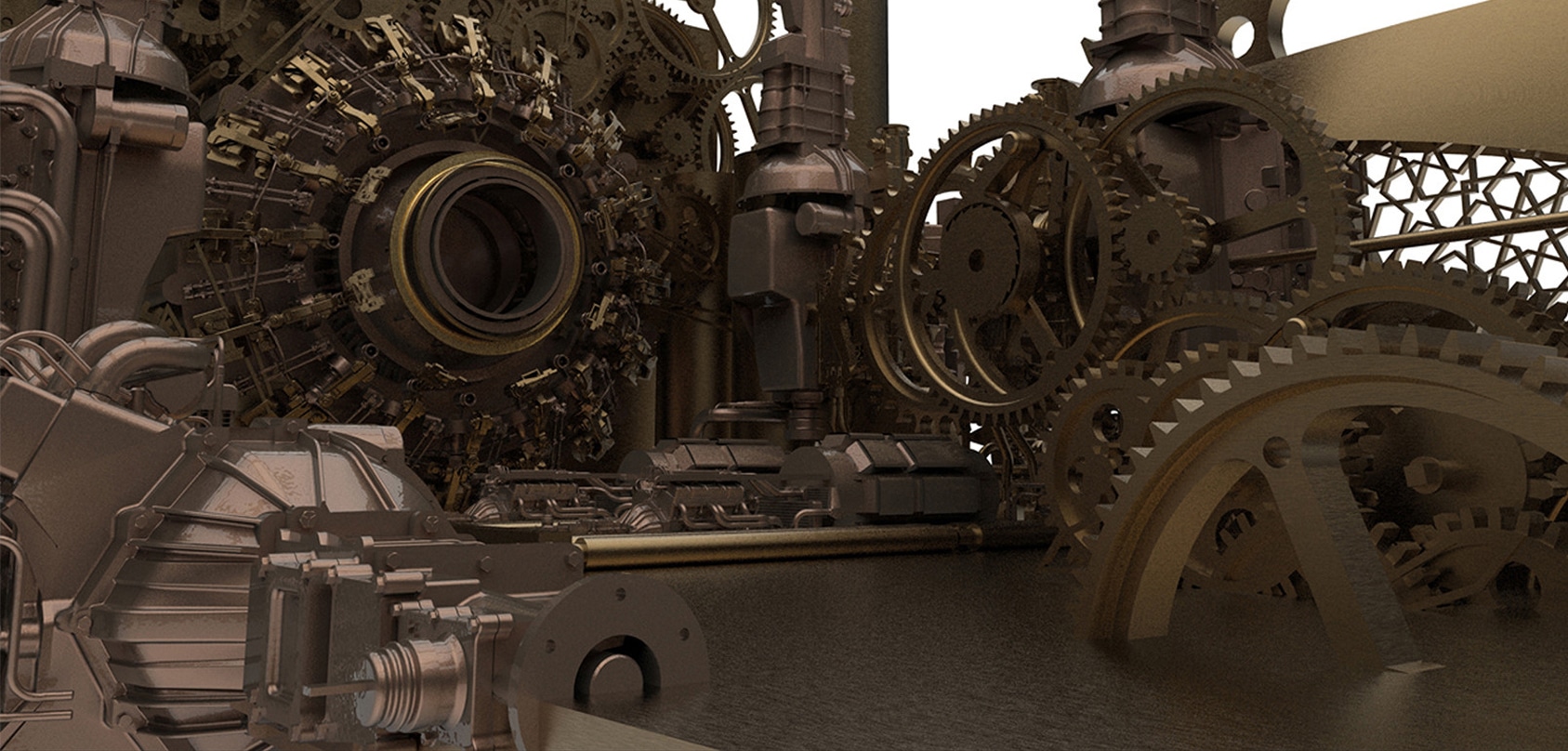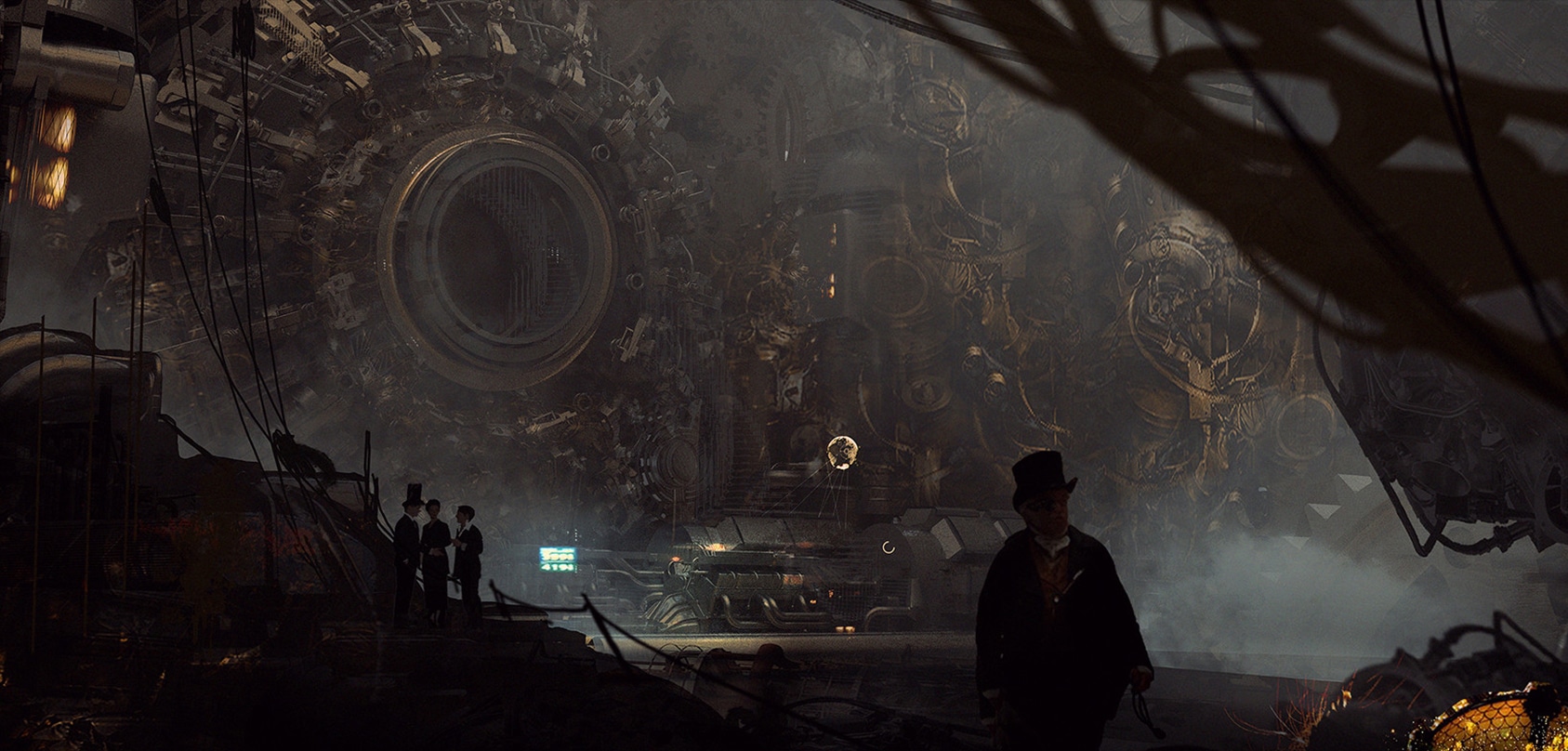Gary Sanchez is not only a Concept Designer with a long list of titles to his name, but he is also an Art Director, Teacher, and Founder of Graphene Design Studio. With skills in both Industrial Automotive Design and Concept Design, his style, speed, and knowledge of the process is sought by many. He views KeyShot as the most important tool for a concept design workflow and tells us more about why that is and how he got to where he is.
What sparked your interest in concept design/art direction?
I started my career as car designer but, since childhood, I was always drawing spaceships. After some years in the industrial automotive design industry, I felt like more concept art creativity was possible in the film and game industry; there seemed more freedom with technical constraints, to extrapolate, and offered the chance to create universes and new shapes without limit. From playing the first Wipeout games on the Playstation and F-Zero on Super NES to receiving the Syd Mead Special Commendation in the 2011 CG Society Challenge, it pushed me to shift direction to working with games studios.
What was the turning point in your career?
There were several turning points in my career but one of the biggest was the opportunity, after many years as employee in different studios, to work as freelancer/consultant in industrial design as well as in the film and game industries, in the early stage of IP or product development (advanced design) where creativity, imagination, and diversity are the hallmarks. Since that time, I’ve had the opportunity to be involved in next-gen, future jetfighter project (with the biggest military group of Europe), creating new spaceships, vehicles, and environments for large IPs in gaming such as Star Citizen (Cloud Imperium), Everywhere (Leslie Benzies), VFX companies such as Digital Domains (and more), the Star Trek series franchise (with Alex Kurtzmann and J Lee (production designer) at Pinewood Studios), Apple IPs, Ubisoft International, and more!
What is unique about your approach to a project/design?
Everybody will say forms follow function, but it’s also important to approach design projects aware of shape language and its aesthetics connotation. This is seen in how surface, shapes, colors, materials, graphics, brand philosophy, manufacturing, or new technologies merge together at the start of a concept to visually create a unique experience or universe. Today, we are not only designing a product but also an experience. Moodboards are crucial, not only for art direction but for sketch iterations, decision making, and viewer reaction. A strong design methodology workflow is important before any final design or visuals. From my point of view, there is no truth in design. Finding the right answer in shape language to the question or challenge established by the client is the most important. It could be smooth, it could be sharp, high tech, low tech, polygonal, alien, near future, minimalistic, brutalist, parametric, 3d printed wood, eco-friendly, funky, historical, or any variation, as long as it’s coherent with the universe of an IP.
What is your primary 3D modeling software?
I primarily use Rhino. It’s excellent for NURBS geometry and generating surfaces quickly. In my opinion, it’s a perfect match for KeyShot, especially for surfacing you want to catch and reflect the light.
Where in the process do you use KeyShot?
This is where I think KeyShot is powerful and can also be used in unconventional ways. For example, as a Concept Designer, I’m not an Illustrator, nor a 3D Artist. It’s a different jobs that required years of experience and great skills too. In concept design departments, you have to create concepts and, most of the time, the process in our department is quick. You need efficiency in terms of time and budget. Yes, it could happen where there are months to develop a concept design vehicle or weeks for some environment keyart depending on the clients but, from my experience, most clients view concepts and iterations from a financial perspective, as part of the reality in production deadlines, so speed matters. Yes, KeyShot is powerful for rendering 4K visuals in final development and I often use it for doing final keyart images, however, it is most efficient used in combination with 2D software in the early stages of a project for the concept research stage – You can go from generating sketched-over toon versions to realistic visuals with beautiful metals, paints, and textures to use in light dev very quickly.
What makes KeyShot an important tool to have?
With KeyShot you can iterate fast; quickly blockout, apply shaders, add custom texture, drop in light or HDRI, adjust camera, and render fast. You can have your scene setup and looking good very quickly and in less time than other software on the market. KeyShot is just the most efficient, powerful visualization tool for concept design. Some years ago, I was looking for an alternative to Bunkspeed (acquired by SOLIDWORKS) and there was no equivalent when it disappear. Only KeyShot is able to generate such rendering in a simple and optimized way specially for concept design. From my perspective, both in the film/game industry as well as the industrial design industry, KeyShot is the most important tool to have in your workflow.
What advice would you give to someone interested in doing what you do?
A strong foundation in 2D, mixed with 3D skills and KeyShot is the perfect match. Maintain passion in all you do, with perseverance, always keep improving, pursuing interest in trends, technologies, and across all creative fields. Try to do your best with all that you have.

See more at garysanchezdesign.com














